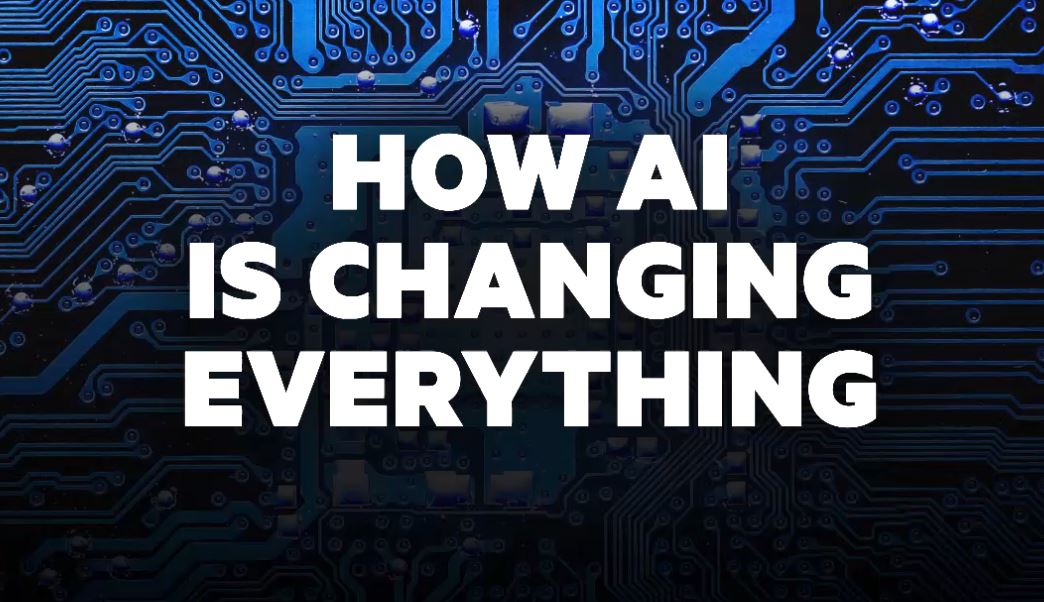“BOLD GOALS”
In September 2022, President Biden released an Executive Order on Advancing Biotechnology. Then, In March 2023, he released a document entitled Bold Goals for U.S. Biotechnology and Biomanufacturing, outlining specific areas of focus in this bioengineering manifesto.

The goals in these documents sound very nice. They’re all about using new technology to fight climate change, increase the food supply, cure diseases, and strengthen national security by increasing domestic manufacturing.
Is that really the goal?
However, I believe that these goals will be used to grab land from existing farmers and ranchers. Farmers and ranchers need to turn a profit to pay taxes on their land; as actions are taken to achieve these goals all but the largest will be driven out of business.
This will occur via a combination of oppressive regulations in the name of climate change, and lawsuits regarding patent-protected crops.
This probably sounds a little crazy, but the crazy people have been getting a lot right lately. Let’s look at these documents and see what they actually contain. Then we’ll look at what this actually means for people involved in food production and some of the precedents that have already been set.
Here’s what’s in the executive order
The EO promotes bioengineered solutions for everything. There will be a push to replace petroleum-based plastics with biomanufactured products. So, for example, developing more plant-based compostable bags, rather than those old plastic ones at the grocery store.
The EO also addresses retaining intellectual rights to everything developed and emphasizes domestic manufacturing.
Supply chain problems have impacted everyone; these documents claim that switching to supposedly environmentally friendly bioengineered products will solve those problems. This document tries to make promoting biotechnology companies into a national security issue.
What are these Bold Goals?
The Bold Goals document addresses more specific actions and lays down goals through 2040. It actually has five sections:
(1) Climate change solutions,
(2) food and agriculture innovation,
(3) supply chain resilience,
(4) human health, and
(5) cross-cutting advances.
These are all areas in which the federal government believes bioengineering holds a great deal of promise. But I’ll focus on the food and agriculture innovation section because I think that one most relates to who owns farmland.
Goals within the agricultural section cover a variety of topics. Many of them make sense; they relate to reducing waste and improving breeding strategies. However, many of the other goals sound like power grabs that have been discussed before.
By 2030, the stated goal of this document is to reduce agriculture-related methane emissions by 30%, and greenhouse gas emissions by 50%.
2030 is only seven years away; this document has some interesting high-tech-sounding solutions, but realistically, the only way to reduce methane emissions so dramatically will be to shrink herd sizes.
Considering that our beef cattle herd is down to its lowest level in over 60 years, I’d say we’re well on our way there.
Within 5 years, American farmers are supposed to reduce agriculture-related nitrogen emissions. The document does not give a specific amount, but does nitrogen reduction sound familiar?
If you’re a regular reader, it should. That’s been the big excuse given for seizing Dutch farms.
So, what happens next?
Goals such as these don’t ban meat outright, but they make it more expensive. They also make it harder for farmers and ranchers to pay their own bills. As they are driven out of business, it becomes easier for people like Bill Gates to buy up that agricultural land.
Another goal addresses reducing food waste, which is indeed admirable, but all discussions revolve around high-tech engineering solutions.
Why do they not address teaching home economics in middle and high schools, to encourage young people to plan their meals and use their food more wisely?
Public authorities seem to think that trying to teach the general population about taking better care of their health and resources is a waste of time. But they believe in the power of marketing when it comes to convincing people to eat all kinds of garbage.
Beef or bugs?
The first section of Goal 2.1 is to “make novel foods more palatable, affordable, easier to prepare, and more easily incorporated into manufactured foods.”
We’ve talked about eating bugs on this website before The Bold Goals document doesn’t address eating bugs directly, but it does refer repeatedly to “novel food sources” and “new protein sources.” I would bet a bison burger that these are just euphemisms for insects.
They also want to promote “alternative protein sources,” such as those that are plant-derived, the result of fermented processes, or cell-cultured. So, along with the push toward insects, they want to push people toward the consumption of highly-processed fake meat items, as well.
This is also something we’ve talked about on this website. Government and industry have been pushing fake meat for a while now, and people just don’t want it. But they’re not taking “no” for an answer; they intend to keep pushing it.
Marketing is everything
Goal 2.2 wants to address “nutrient density” in foods. They want to do this with more genetic engineering (of course), expanding the “range of organisms that can be used for nutritional purposes” (probably more insect- and algae-eating), and research into traditional medicinal foods.
Traditional medicine’s great. Ethnobotany was one of my favorite college classes, and Sally Fallon’s Nourishing Traditions is one of my favorite books.
But a big drive behind both the EO and the Bold Goals document is scaling up production of everything between food and industrial products; traditional food production methods are something individuals can replicate, but they don’t lend themselves to large-scale production.
For example, look at manoomin, the wild rice grown in Michigan, where it is the most culturally significant food source to Native Americans living in the area.
Groups like Native Harvest collect wild rice in canoes and process it in the traditional way. It’s delicious, nutritious, and $24/lb. I bought some once because I was curious, and it is wonderfully unique. But anything that expensive can’t be a regular part of my diet, and I would guess it’s not realistic for most other people, either.
Is the government trying to replace farmers with AI?
This makes me think that either the federal government is just tossing this language into the document as a nod toward “diversity,” rather than any real attempt to expand the availability of traditional, nutritious food.
There is also a drive to get AI into farming. In some ways, this isn’t surprising; large-scale farms have had a very difficult time finding employees that can monitor the various systems needed to keep animals in large confinement operations reasonably healthy.
Aden just had an article about AI getting into everything; I think this proves his point.
To facilitate all these goals, the government plans various initiatives for public-private partnerships, as well as incentive programs for people working in the alternative proteins sector.
These documents emphasize developing new technologies for food production and then scaling up. There is no discussion of looking at models that work well, and then broadly replicating them. There is no whisper of supporting existing environmentally friendly, biodiverse farms.

Bio-engineering results in patents
You can probably see how the increase in regulations and financial incentives are lining up to drive meat producers out of business. But let’s also look at how patent protection could potentially be used to drive many other conventional farmers out of business, as well.
Both of these documents reveal a mechanistic view of life as we know it. A theme throughout these documents is the desire to pick plants apart and then re-engineer them to meet scientists’ exact goals. Goal 1.2 is to:
Expand upon biorefinery technologies to efficiently break down biomass into its components (e.g., lignin, hemicellulose, and cellulose); to convert lignin and hemicellulose into plastics, adhesives, and low-energy building materials; and to convert cellulose fiber into nanomaterials and cellulose derivatives for fibers, coatings, renewable packaging, and other products. [Source]
There is also the continued assumption that we can hack into cell mechanisms the exact same way people hack computer systems. The fourth paragraph of the EO states:
We need to develop genetic engineering technologies and techniques to be able to write circuitry for cells and predictably program biology in the same way in which we write software and program computers; unlocking the power of biological data, including through computing tools and artificial intelligence. . . [Source]
The people behind this see life as something that can be stripped down into its individual components and then rearranged in exactly the way they see fit. This stripping down of plants into their individual components, this precise engineering, makes them patentable products. And you can sue people for patent violations.
Patenting plant genetics has been on the rise since the 1980s. Monsanto has a history of suing farmers over patent violations, even when the use is unintentional.
For example, a huge percentage of corn grown worldwide is Monsanto’s Roundup Ready. All corn is wind-pollinated, which means that even if you’re growing heirloom corn from seed you’ve saved yourself, if your neighbor grows Roundup Ready, that pollen will get into your heirloom corn plants. And Monsanto can sue you for it.
Monsanto is not alone
Bill Gates, the largest owner of farmland in the U.S., has been notorious for suing competitors for patent violations.
Considering that the Bill and Melinda Gates Foundation has dumped many hundreds of millions of dollars into various biotechnology ventures over the years, it’s probably safe to assume they have business interests in these Bold Goals, too.
The EO and the Bold Goals document make it clear that intellectual property protection will be a high priority with these emerging technologies.
We have no reason to assume that the developers of these new technologies will not continue to file lawsuits against independent farmers at least as aggressively as they have in the past.
Any business owner knows that constant threats of legal action make it harder to stay profitable. Behind these nice-sounding goals are the tools to get independent people off the land.
The government is “going all Stalin” on farmers
Totalitarian governments have always dramatically shaken up who uses what land. Farmers are obnoxiously independent; their wide variety of useful skills makes them hard to herd into the 15-minute cities we’re all supposed to be living in.
This push toward bioengineering everything is designed to shake up agriculture, get independent people off the land, and turn control of agricultural processes over to technicians.
Farmer-punishing actions are being taken by governments all over the world. The Dutch farmers have been in the news for a while now. Canadian farmers also have a very stringent new set of emissions laws that will likely drive many of them out of business.
This “solution” doesn’t benefit the average person
The agricultural sector does face real challenges, but there are low-tech solutions, many of which are practiced by the people that read this website. Do we need healthier food? Absolutely. But we know that highly processed food is a cause of, not a solution to, the health crisis.
Don’t be fooled by promises of high-tech solutions coming down the pipes. Solutions such as the ones outlined by the Bold Goals are designed to enrich a few favored industries.
If you value your health and your independence, growing, preserving, and preparing your own food has never been more important. (Learn how to grow food with this course.)
Are there other ramifications to this that aren’t mentioned here?
Do you think this is an agenda similar to the one that Dutch farmers are facing? How are you going to prepare yourself for this?
What, if anything, do you think we can do about it?

By Marie Hawthorne
Republished by The 21st Century
The views expressed in this article are solely those of the author and do not necessarily reflect the opinions of 21cir.com
